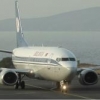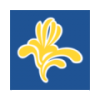Search the Community
Showing results for tags 'J32'.
-
Hi everyone, Next WIP I'm going to post here would be for a fighters duo from Flygvapnet. J21R - a Special Hobby kit and J32B - Tarangus kit. Two boxes have been in my stash for about 4 years and now seems it's time to open'em!!!
- 75 replies
-
- 9
-

-
SAAB J32B/E Lansen 1:72 Tarangus Following WWII Sweden was looking for a new Strike aircraft to replace their ageing prop driven aircraft. An ambitious requirement was issued, and Saab came up with the Lansen, a large streamlined dual-seat, single engine aircraft with swept wings and tail, powered by a licence built Rolls Royce Avon. Much is made over its visual similarity to the Lockheed Shooting Star, and even to an abandoned Messerschmitt project, the P1110. Although this is just a result of the prevailing aerodynamic research of the time, it doesn't stop the speculation! The Lansen project resulted in a well-liked and reliable aircraft that served on the front line from 1955 to the late 70s, and in second line service into the 90s. It was capable of carrying the new (at the time) anti-shipping missiles, as well as the A model having an armament of four Bofors 20mm cannon, mounted behind retractable doors in the nose. It could also carry unguided rocket pods and license produced Sidewinders for A2A combat. The B version would upgrade to a hefty 4 x 30mm ADEN cannon. Later on in it's service life four B airframes were modified to ECM training aircraft with the J23E designation. Two airframes were kept airworthy by the Swedish Radiation Safety Authority until 2010, sampling radiation in the upper atmosphere. The Kit The kit is The first ever kit of the fighter version of the Saab Lansen, aka Lansen Sport, in 1/72 scale. The kit is typical of a short run kit, the plastic has fine engraved panel lines (a bit too fine at times), there are larger then normal sprue gates and injector pin marks. The review copy has a slightly short shot burner can. The clear sprue is a little thick but not overly so and is clear. Construction start with the cockpit. The tub is not one part but the front and rear are built separately and joined. The front wheel well is fist built up under the front cockpit as the cockpit floor forms the roof of the gear bay. The two sides are added along with the front and rear bulkheads. This can then be flipped over and the control column and instrument panel are added. The rear cockpit has the instrument panel and rear bulkhead added. The two are then joined together. The ejection seats can then be made up and added. Each seat has the main seat part, rails, and head shields to add. Next for each fuselage side the engine intakes are added, then the main gear wells can be added, along with the 4 part exhaust. Once these are all in main fuselage can be closed up. The coaming is then added in front of the cockpits and the glass partition between the cockpits is also added. A prominent blade antenna is added on the nose. Moving toward the rear another blade antenna and four cooling scoops are added. Next to go on are the tail planes and vertical fin. It is good the fin is one part and separate from the fuselage halves as they have been able to control the thickness better. Next up are the main wings. These are of a conventional two part upper and single part lower wings. A prominent blade antenna is added to each wing along with a wing fence. The fence is quite thick in plastic and would benefit from a PE replacement, as would the antenna. The pitot probe is added to the right wing. The wing can then be joined to the fuselage and the ventral fuel tank added. The undercarriage is then added. A single nose wheel assembly complete with wheel is added along with the two front gear doors. The twin landing lights are added to the front of the gear well. The main gear is two part wheels which attach to their own leg. The outer main gear doors then attach to the leg. The inners to the fuselage. There is a retraction strut to add to the main gear leg. The last things to add are the pylons and weapons if you want to use them. Two generic sidewinders are included but are not too detailded. Last item on is the single part canopy. Decals Decals are provided for 4 aircraft. There is no mention of the decal maker on the sheet. 32532, J 32B, F12 From Kalmar wing 1968. Marked with orange squares. Possible use of smaller insignia on the wings. 32536, J 32B, F1 From Hasslo/Vasteras Wing. 32615, J 32B, F15 From Froson/Osterung Wing 1970s. Use of orange square markings which were later removed left unbleached squares on the paint. 32507, J32E, F16-01, From Uppsala Wing, jamming aircraft 1996. Conclusion While it is good to see this type of limited use aircraft available to the 1.72 modeller this is not a mainstream kit and care will be needed in its construction. Tarangus are to be thanked for releasing this in 1/72. Recommended. Review sample courtesy of
-
After the 1/48th model ( http://www.britmodeller.com/forums/index.php?/topic/234911361-saab-a32a-lansen/ ) Tarangus is to release a 1/72nd Saab J32B/E Lansen kit - ref.TA7202 Source: http://www.tarangus.se/2015/11/05/tarangus-to-release-saab-j32be-lansen-in-172-and-scottish-aviation-bulldog-sk-61-in-148/ Box art V.P.
-
Happy New Year to all!!! Today's releases are all INKJET New: Dash8 -100 Ansett-Newmans hybrid scheme 1/72 and 1/144 BAe J31/32 Jetstream - Vincent Aviation 1/144 Updated: Dash8s - Ansett New Zealand, Qantas New Zealand, Origin Pacific, Air National and Vincent Aviation. 1/72 and 1/144 The Air NZ Dash8s are being worked on and will be re-released in DIGITAL format probably in February. John PPQ Oldmodels Decals www.oldmodelsdecals.com




